Traditional in-ground gardening can be difficult, especially for those with limited space or poor soil quality. The solution is to use Grow bags! These versatile containers can be used to grow a wide variety of plants, including zucchini.
In this article, we’ll review the 5 best grow bags for zucchini, provide 4 steps for effective gardening, and tips for maintaining healthy plants. Let’s dive deeper into the specifics of how to optimize your grow bag gardening experience!
Contents
Zucchini Grow Bags – Quick Overview
When it comes to growing zucchini in fabric grow bags, there are many options to choose from, but to make it easier, we have compared the top 3 best grow bags for zucchini to help you make an informed decision.
1. Gardzen 6-Pack 3 Gallons Grow Bags
The Gardzen 6-Pack 3 Gallons Grow Bags are a great choice for those looking to grow zucchini in a compact and efficient way.
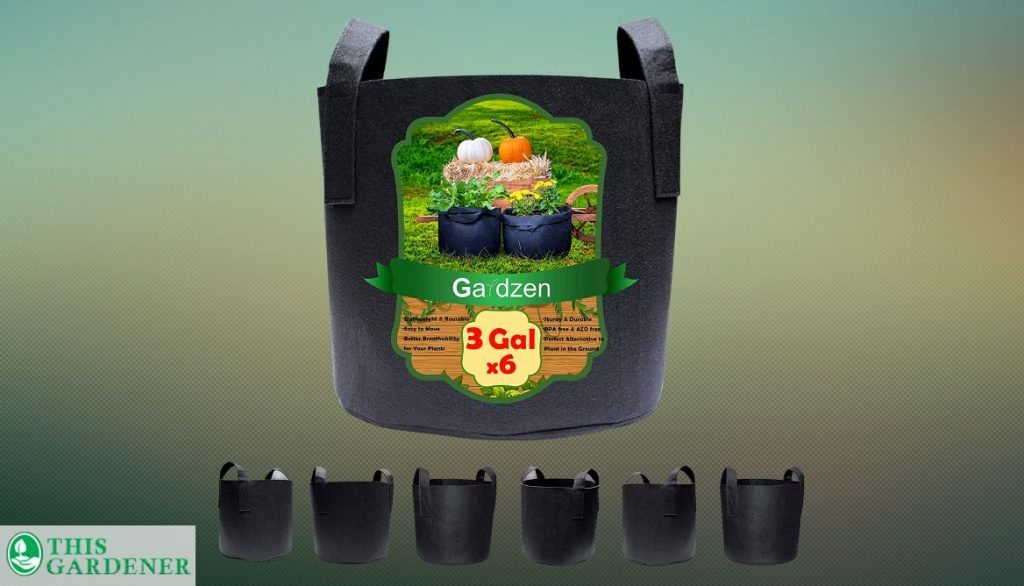
Features
There are some feathers of the Gardzen 6-Pack 3 Gallons Grow Bags:
- These aeration fabric grow bags are made from high-quality, non-woven material that allows for optimal air and water flow, promoting healthier root systems.
- They are equipped with a built-in spigot and drain hole that allows you to easily drain excess water from the pot.
- Easy to use, as they come with easy-to-follow instructions that include both the growing process and the care of your plants.
- Lightweight and durable enough to withstand harsh weather conditions without compromising on quality or performance.
Material: | Non Woven Fabric |
Color: | Green, Black |
Dimensions: | 15.7 x 15.7 x 11.8 inches |
Weight: | 10.6 Ounces |
Special Features: | Drainage Hole, Air Permeability, Promote Robust Root System |
- A 3-gallon bag size is perfect for growing zucchini
- The non-woven fabric allows for proper aeration
- Handles make it easy to move the grow bags
- Great value for the price.
- The grow bags are not UV resistant
2. Smirdx Plant Grow Bag
If you’re looking for heavy-duty and durable best grow bags for zucchini, then the Smirdx Plant Grow Bag is a great option.
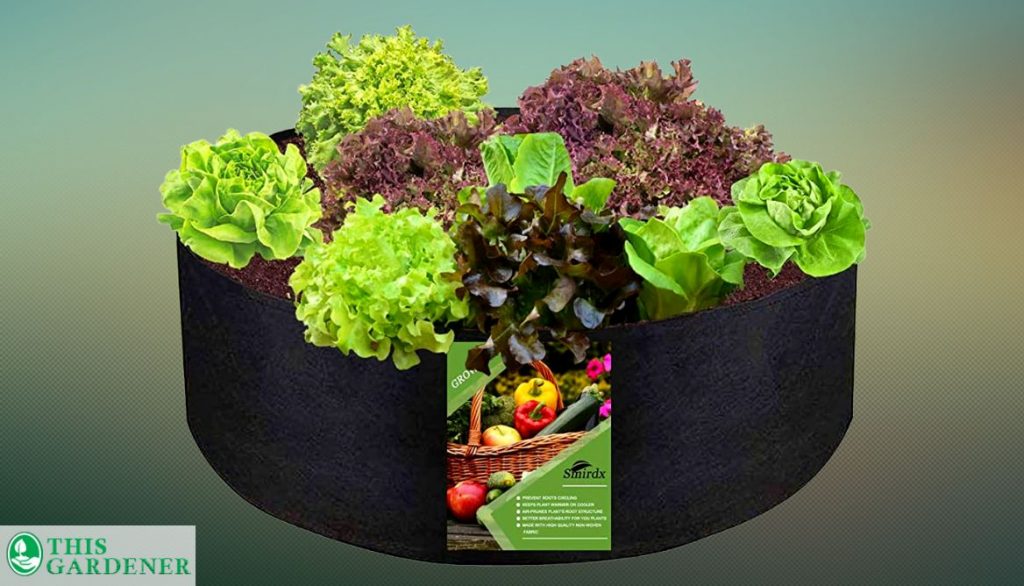
Features
Check out some interesting features of the Smirdx Plant Grow Bags:
- These fabric pots are made from a thick, tear-proof material that can withstand the elements and last for multiple growing season.
- They are large enough to hold up to a full-sized zucchini—or two smaller ones—and will allow you to grow your own food at home!
- Each grow bag comes with its own stake, making it easy to plant in any soil type.
- The grow bag is also made from a heavy-duty material that can be used again and again without losing its shape or strength over time.
The Smirdx Plant Grow Bag is the ideal choice if you want to grow vegetables indoors or if you are looking to save money on your grocery bill. You can use it year round even in the coldest weather without worrying about frostbite or freezing temperatures.
Material: | Non-Woven Fabric |
Color: | Black |
Dimensions: | 24″D x 24″W x 8″H |
Weight: | 0.634 Ounces |
Special Features: | Wall Mounted, Eco Friendly, Reinforced Sewing |
- Heavy-duty fabric is tear-proof
- Can withstand the elements
- Suitable for long-term use.
- Grow Bags are UV resistant
- The price is higher compared to other options.
3. iGarden Tall Heavy Duty Grow Bags
If you’re looking for durable and versatile best grow bags for zucchini, then the iGarden Tall Heavy Duty Grow Bags are a great choice.
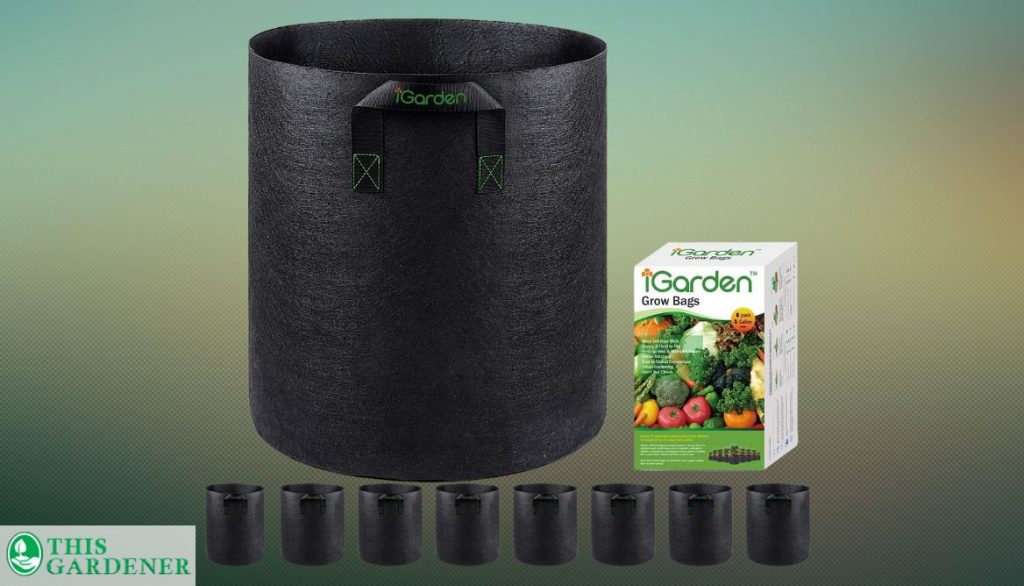
Features
Look for great iGarden Tall Heavy Duty Grow Bags features:
- These heavy-duty fabric grow bags are made from thick, tear-proof material that can withstand the elements and last for multiple seasons.
- Grow bags are easy to use, with a wide opening so you can easily add soil with your hands.
- The flower pot comes in three sizes: small (2.5 inches), medium (4 inches), and large (5 inches).
- You can choose from three colors: black, green or white.
- The iGarden Tall Heavy Duty Grow Bags come with a lifetime warranty against defects in materials or workmanship.
Material: | Non-Woven Aeration Fabric |
Color: | Black |
Dimensions: | 4.3″D x 5.9″W x 12.4″H |
Weight: | 1.5 pounds |
Special Features: | Upright Clear Design, Smart Drainage, Reinforced Handels |
- Handles for easy transport
- The grow bags are UV resistant
- 5-gallon size perfect for growing zucchini
- The grow bags may not be as durable
4. JERIA 12-Pack 7 Gallon Root Vegetables/Flower/Plant Bags
The JERIA 12-Pack 7 Gallon Grow Bags are a great option for those looking for cost-effective and versatile best grow bags for zucchini.
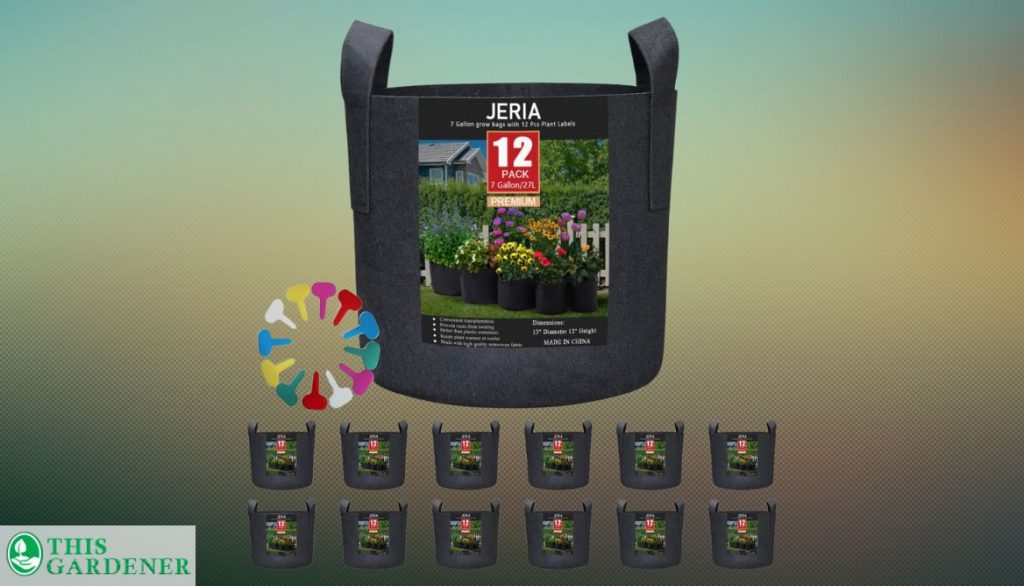
Features
There are features of the JERIA 12-Pack 7 Gallon Grow Bags:
- These fabric grow bags are made from a thick, non-woven material that is breathable and allows for proper drainage and aeration.
- They are also designed to ensure that your plants get the soil moist.
- The product comes in a pack of twelve grow bags so you don’t have to worry about running out at the wrong time!
- The inner walls of the grow bag are made from an absorbent cotton material which helps to keep moisture at bay.
Best Grow bags for zucchini work best when used indoors or in an area where temperatures remain above freezing during the day but below freezing at night time. They can also be used outside during milder weather conditions but these will require more attention.
Material: | BPA Free Shock Absorbent Non-Woven Fabric |
Color: | Black |
Dimensions: | 13″D x 13″W x 12″H |
Weight: | 3.56 pounds |
Special Features: | X shaped Stitching, Shock Absorbent |
- Non-woven material allows for proper drainage and aeration
- Promotes healthy root growth
- Grow Bags are reusable
- An Eco-friendly grow bag option
- Some users reported issues about plant retaining water
5. SunArea 10-Pack 10 Gallon Grow Bags
The SunArea 10-Pack 10 Gallon Fabric Grow Bags are a great option for those looking for a cost-effective and large best grow bags for zucchini.
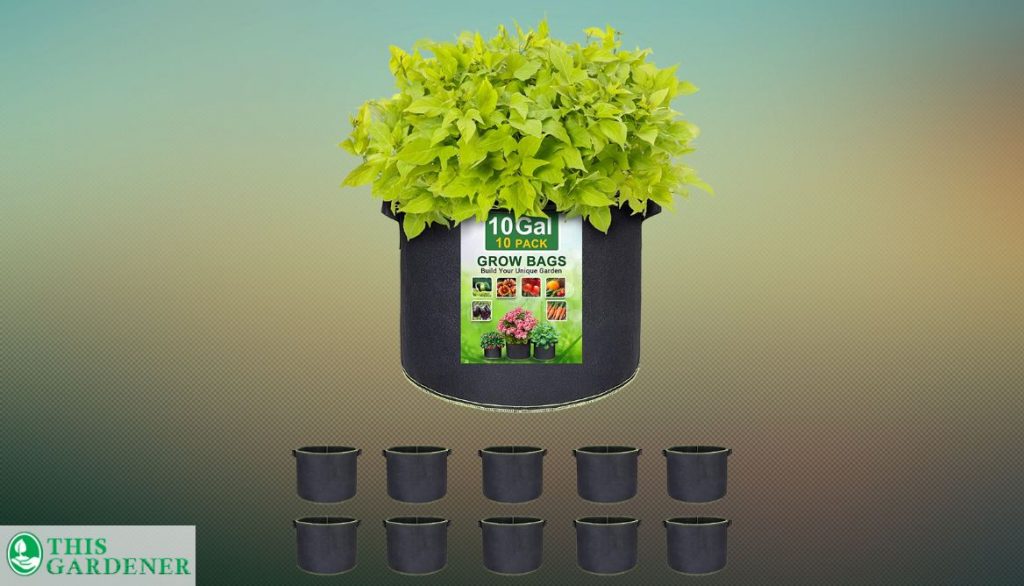
Features
Check out the features of the SunArea 10-Pack 10 Gallon Fabric Grow Bags:
- The fabric pots are made from thickened nonwoven material that is breathable and allows for proper drainage and aeration.
- These grow bags also feature an innovative design that allows for easy access to your plant roots.
- Recommended for use with thirsty plants’ hydroponic systems, but can also be used in the soil-based vegetable garden!
- Ideal for indoor growing due to their durability and easy-to-use design.
They can be used indoors or outdoors, but they will not be able to tolerate subzero temperatures well, so you should plan on keeping them in an area with good sunlight exposure.
Material: | Bio-degradable 300 G Thickened Non Woven Fabric |
Color: | Green, Black, Brown |
Dimensions: | 15.7″D x 15.7″W x 11.8″H |
Weight: | 10.6 ounces |
Special Features: | Double Suture, Highly Tear Resistance |
- Great value for the price
- More durable than regular nonwoven material
- Suitable for long-term use
- The grow bags are not as breathable
Reasons to Grow Zucchini in a Grow Bag
If you’re looking for a way to get more from the garden, growing your favorite veggies in a fabric grow bag is one of the best options. Here’s why:

1. Space Efficiency
Grow bags make growing vegetables easier than ever before. They’re space-efficient and easy to clean, so you can focus on the more important things in life. Fabric Grow bags are the perfect solution for small gardens and balconies because they take up less space than traditional gardening methods.
If you have a small yard and don’t have much space to spare, then grow bag gardening is worth considering:
- Can be stacked on top of each other to save more space.
- Used for vertical gardening, and is ideal for small spaces.
- Grow bags can be stored away easily until you need them
This means they’re great for people who don’t have a lot of time to garden or want to grow their produce at home as much as possible.
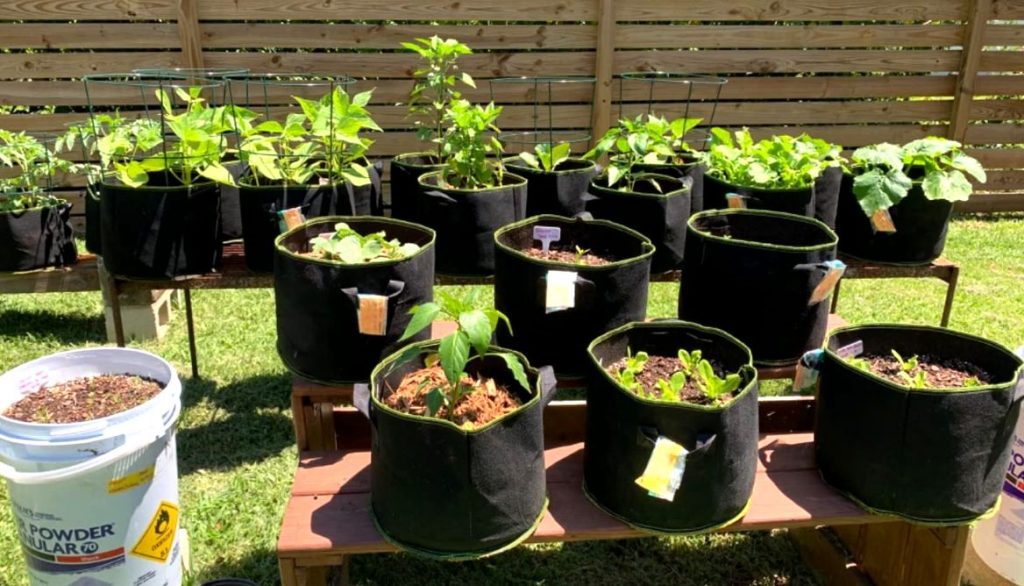
2. Mobility
Whether you’re a renter or a homeowner, you know how important it is to be able to move your plants around. Zucchini is a great crop for this because it’s so easy to grow—and with the right grow bag gardening is even easier!
- Your zucchini will also be able to handle being moved from place to place with ease: no plant roots need to go into shock when you move your zucchini.
- And if you ever get tired of growing your zucchini in one spot and want something else instead, just replace the grow bag and start over!
- Grow bags can also be used as temporary potting soil when you need to transplant a plant for whatever reason.
- They’re also ideal for renters or those who move frequently because they don’t require much in the way of setup and cleanup time.
3. Creative Potential for Container Garden
The great thing about growing zucchini in a grow bag is that it gives you the creative freedom to create unique and interesting designs for your container gardens.
One benefit of growing plants in the best grow bags for zucchini is that they provide more control over soil conditions, including pH levels, nutrient levels, and moisture levels.
Things to Keep in Mind with Grow Bag Gardening
Grow bag gardening is a great choice for growing zucchinis, but you’ll want to make sure you keep a few things in mind when using them.
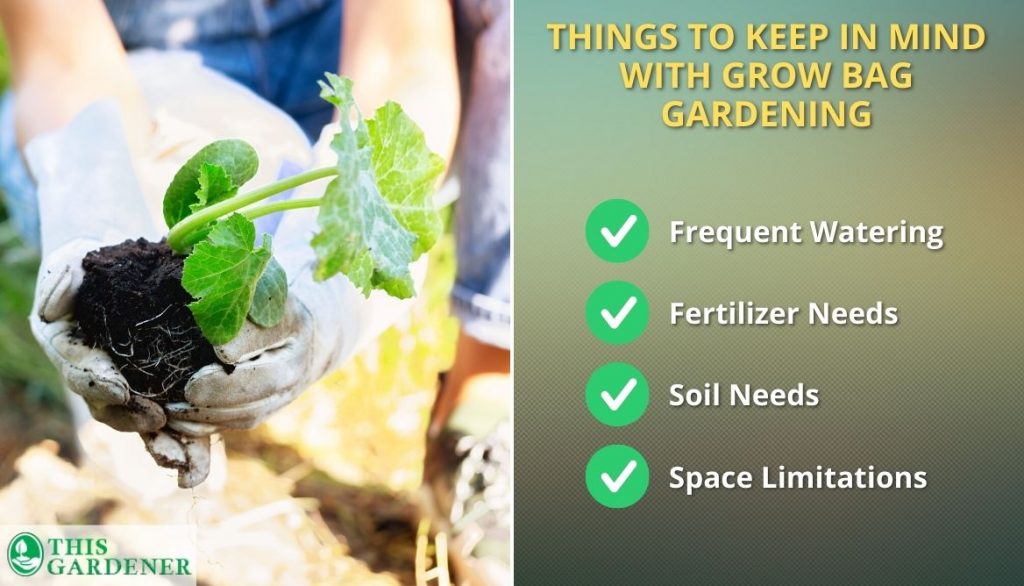
1. Frequent Watering
One of the things that you’ll need to keep in mind when growing zucchini is frequent watering:
- You want to make sure that your soil remains consistently moist, but not soaked.
- If you see water pooling on the bottom of the plastic pots container garden, it’s time to give your plants an extra boost.
- You can tell if your plant needs water by looking for dry leaves or stems, or if the soil feels dry between your fingers when you’re holding it in your hand.
Note: If you find either of those signs, give your plastic pots or best grow bags for zucchini a good soak! It's best to do this once or twice a week, depending on how much water each plant uses.
If you’re unsure whether you need to water, just wait until you see signs of drought before watering again—it’s better safe than sorry!
2. Fertilizer Needs
Fertilizers are made up of different types of nutrients (N, P, S, and K) that help plants grow. There are also trace elements like iron and zinc that are essential to a plant’s health.
Note: Plants have all kinds of different needs depending on the type of plant they are and where it is being grown. So, it's important to know what kind of fertilizer works best for your particular grow bag gardening variety!
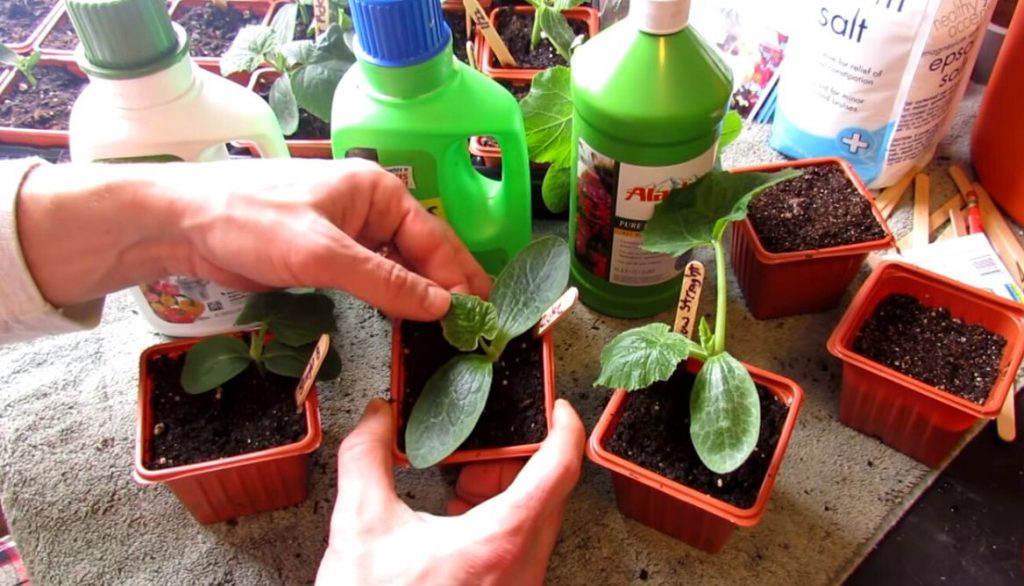
To grow zucchinis in your garden:
- You can use a balanced fertilizer every 2-3 weeks. This will provide all the necessary nutrients plants need to thrive including potassium and magnesium.
- Consider using a slow-release fertilizer for sustained feeding because this will help prevent nutrient runoff into waterways and provide nutrients for faster growth over time.
3. Soil Needs
Soil is the foundation of a successful garden. It’s not just what you put in the ground, but how you manage it. The right soil will help your plants grow strong and healthy, while poor soil can lead to sickly plants.
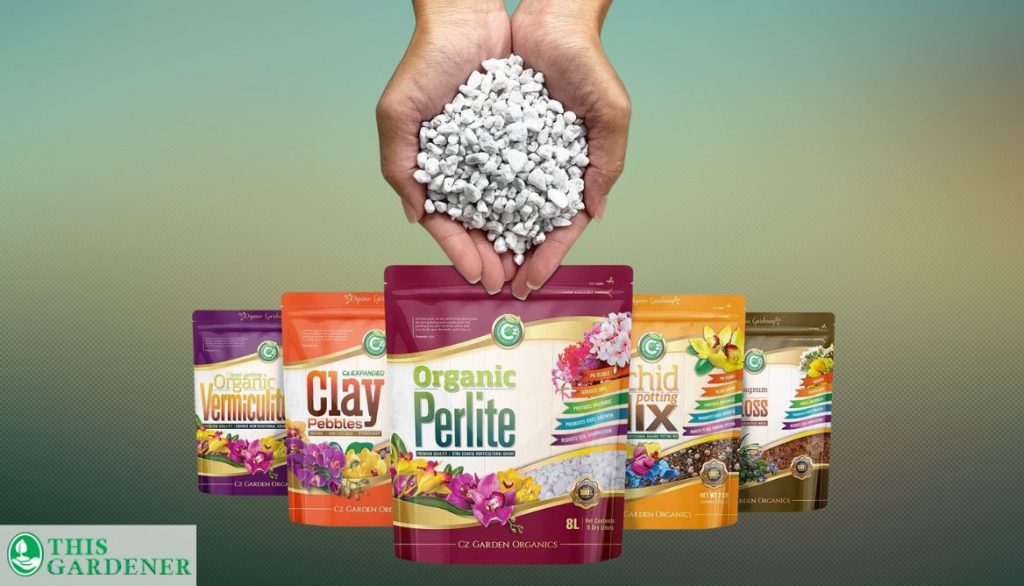
To ensure that your plants have everything they need to thrive, we recommend using:
- A high-quality, well-draining potting mix.
- A sturdy breathable and air permeable make the best grow bags for zucchini.
- First off, make sure your soil is high-quality and well-draining.
- If your plants are in fabric grow bags or containers, you’ll need a potting mix that provides ample drainage so the healthy roots don’t rot.
- You can use perlite or vermiculite for added drainage.
- In addition to high-quality soil, make sure it’s free from weeds and pests such as slugs and aphids.
- Finally, remember that as with any type of gardening, you want to keep things as simple as possible—don’t add fertilizer until after the first flush of growth!
4. Space Limitations
So you’ve decided to grow your own root vegetables? Great! There’s a lot to consider when growing zucchinis. You’ll want to make sure your space is big enough, and you want the best grow bags for zucchini.
Choose Drwaf Varieties
Choose compact companion plants or dwarf varieties to fit for smaller grow bag gardening. They may be more susceptible to bugs and disease, but they will also produce more fruit per plant, which means less work for you!
Use Supporting Trellis
Use trellising or supports for growing plants in the grow bag. This will prevent the stems from breaking off and getting stuck in the bottom of their pots, which can lead to damage and loss of potential yield.
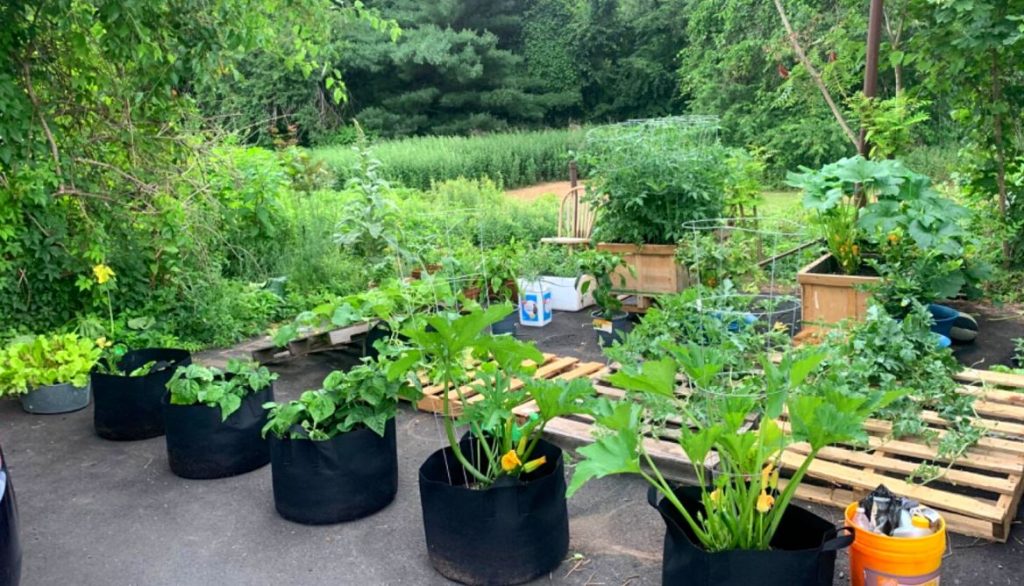
Use Large Grow Bags
Consider using multiple specialty grow bags for larger plants or a larger yield. It’s not always necessary, but if you’re looking at growing zucchinis in larger quantities (say, over 100 pounds), it can help ensure that all your plants don’t get too stressed out by being confined so closely together.
Ways to Preserve Zucchini
Zucchini is a tasty summer squash that can be grown in just about any climate. It’s also a great source of vitamin C, which you’ll find in its flesh and skin.
But did you know that zucchini plants are also susceptible to pests? And more specifically, that these pests can thrive in your garden if you don’t take precautions?
1. Pests
Here are some tips for how to preserve zucchini from these pests:
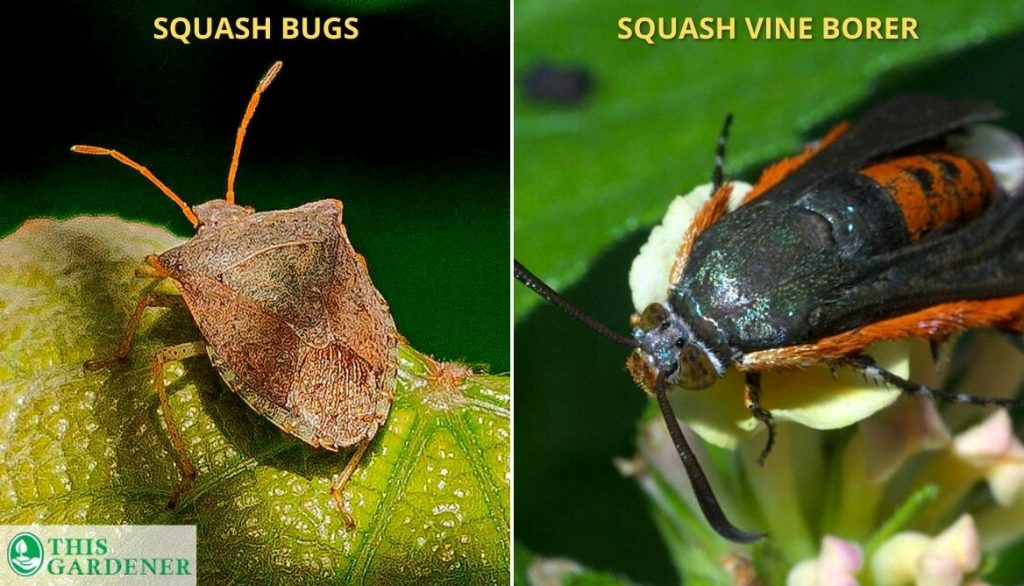
Squash Bugs
- Handpick and destroy eggs and adults as soon as possible.
- If an adult is spotted on the plant, cover it with row covers to prevent new egg laying.
Squash Vine Borer
- Look for wilted leaves and sawdust-like frass near the base of the plant
- Then cut out and destroy affected areas.
2. Other Zucchini Pests
Zucchinis are root vegetables that are great for eating, but they can also be pest infested if you don’t know how to preserve them. There are three main pests that can affect your zucchini plants: aphids, whiteflies, and cucumber beetles.
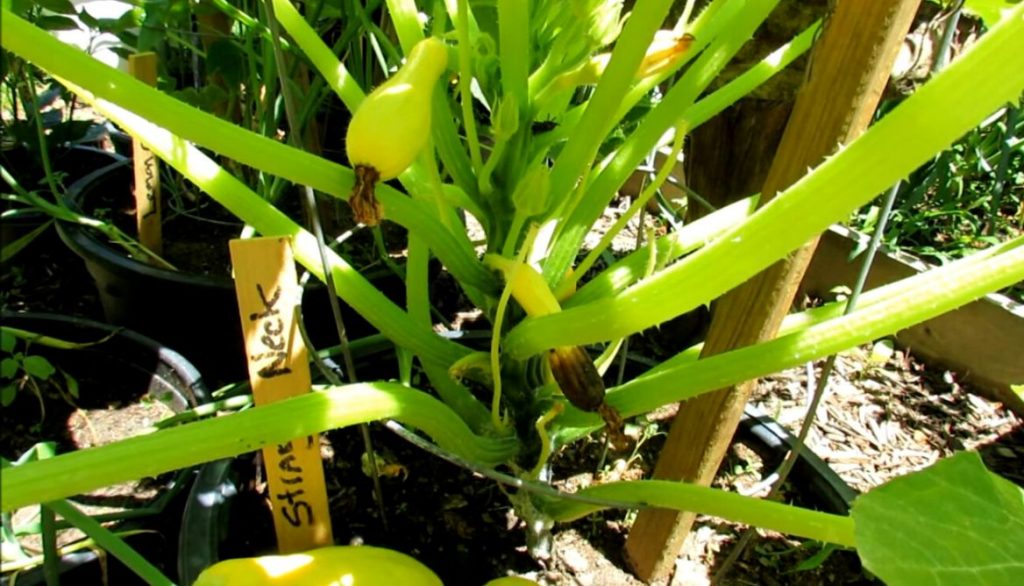
Aphids
Aphids are small, soft-bodied insects that feed on plants. They often appear as green or brown spots on the undersides of leaves.
To treat an infestation effectively:
- Check each plant thoroughly and remove any aphids you find so they won’t spread their eggs to other plants.
- If you have aphids on your zucchini plants, you may also want to consider organic pest control methods.
Whiteflies
Whiteflies are tiny winged insects that look like small flies. They feed on the underside of leaves and can cause stunted growth and leaf spots with red or yellow dots on them.
To get rid of whitefly infestations from your zucchini plants:
- Use organic pest control methods such as BTs (Bacillus Thuringiensis) or pyrethrin sprays directly onto the base of the plant where they are feeding on foliage.
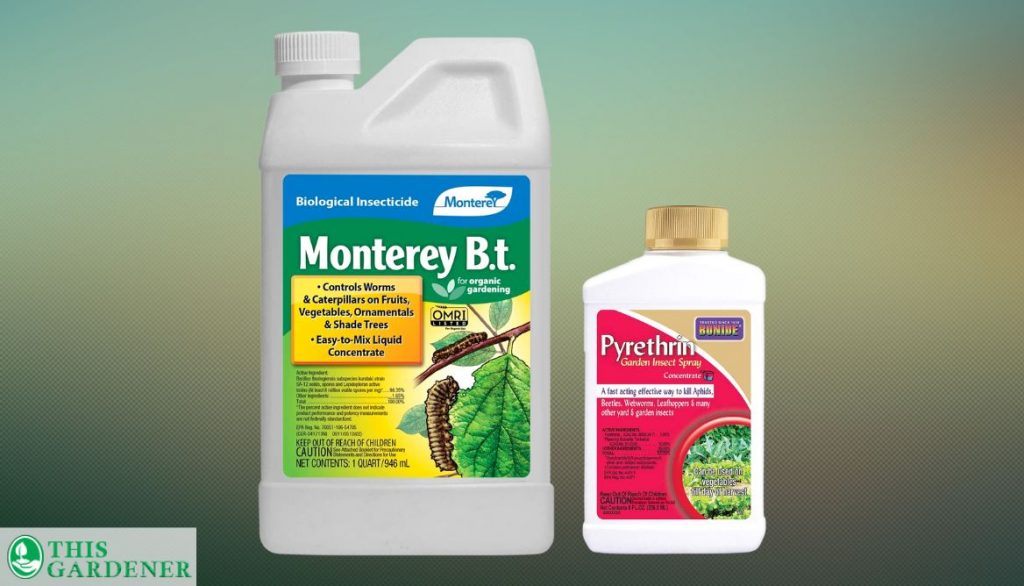
Cucumber Beetles
Cucumber beetles are greenish-black beetles with distinctive horn-shaped shapes on their heads and no wings.
Here are 4 ways to keep pests away from your zucchini:
- Use organic pest control methods as needed.
- Monitor for common garden pests such as aphids, whiteflies, and cucumber beetles.
- Keep crop plants healthy and active by watering regularly and fertilizing with compost or manure or both!
- If bugs do take over, use natural remedies like garlic oil or neem oil—they’re safe for humans but will also repel pests!
3. Diseases
Zucchini diseases are a big problem in the garden. There are many ways to prevent zucchini diseases, but there are also ways to avoid them altogether.
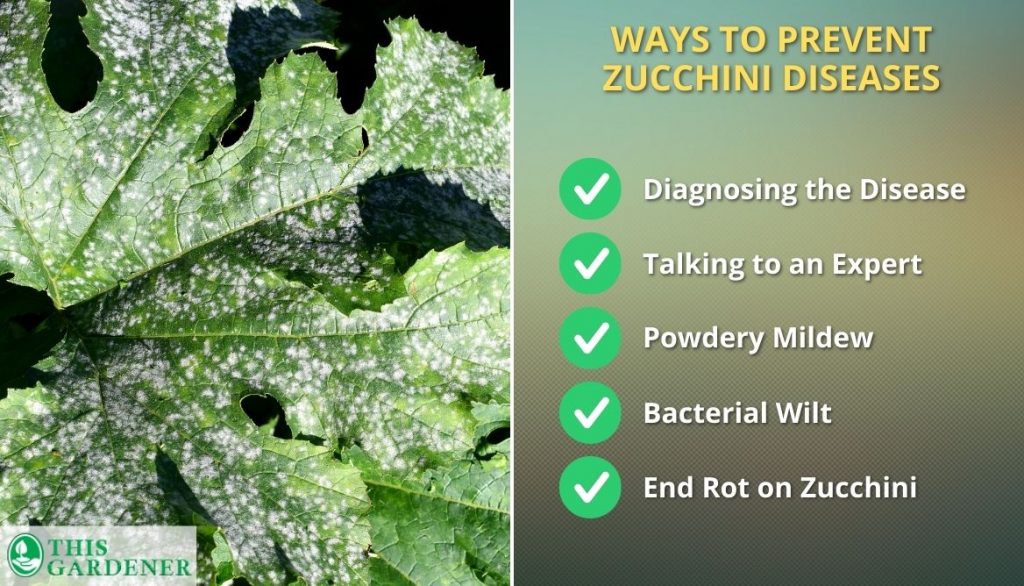
Diagnosing the Disease
The most important thing is to know what kinds of diseases your garden is susceptible to. This can be done by looking at the symptoms of each disease, and also by talking with other people who have had similar experiences.
Talking to an Expert
If your plants are susceptible to a certain disease, you should talk with an expert about how best to avoid it. Some experts recommend removing infected plants from your garden and destroying them, while others recommend using disease-free seeds and rotating crops every few years.
Powdery Mildew
Powdery mildew is a disease that can be spread by damp conditions, so it’s important to ensure that your zucchini plants are well-cared for.
Here are some tips for preventing powdery mildew:
- Avoid overcrowding and provide good air circulation
- Remove infected leaves
- Use a fungicide labeled for powdery mildew
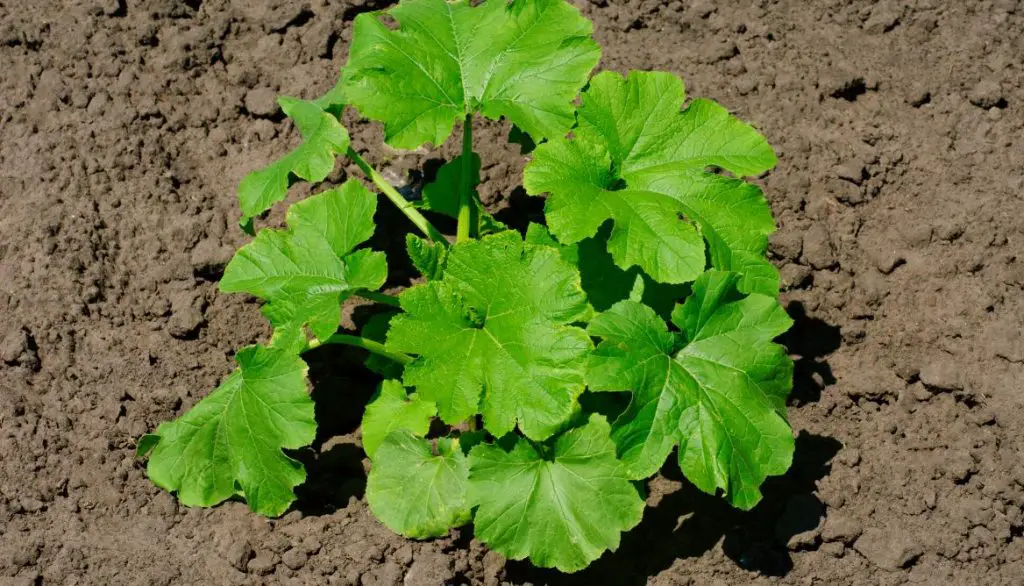
Bacterial Wilt
Bacterial wilt: Remove and destroy infected plants. This includes both infected leaves and stems, as well as flowers that are wilting or turning yellow.
Here are some things you can do to prevent a wilt outbreak in your grow bag garden:
- Remove and destroy infected plants
- Use disease-free seed
- Rotate crops
End Rot on Zucchini
If you’re growing your own zucchini in a grow bag, you might be wondering how to keep them from getting end root rot. This is a common problem that crops up in the late summer and early fall when the days are hot and dry.
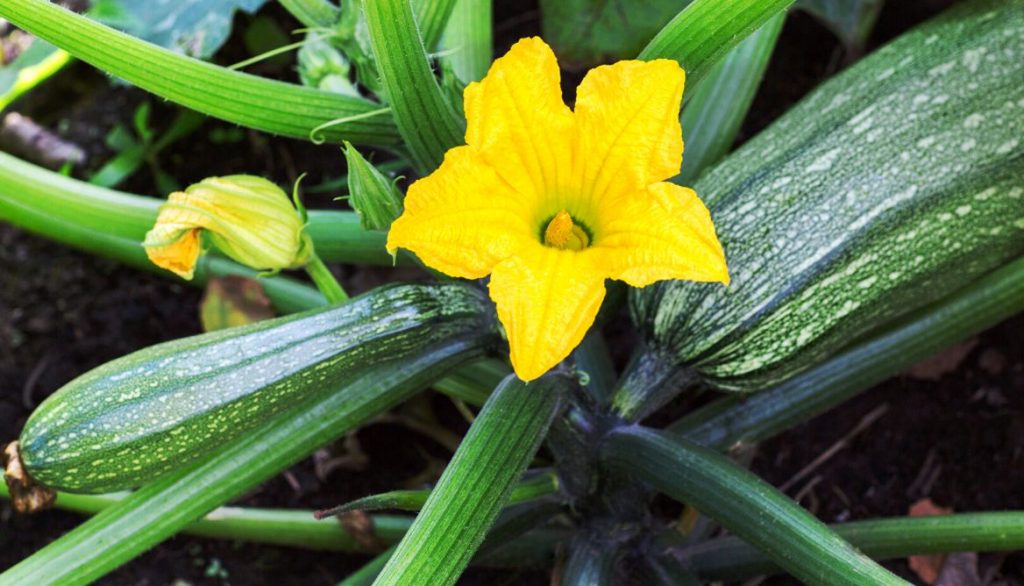
It’s important to know that you can prevent this by taking several steps:
- Ensure proper calcium intake for your plant (zucchini need a lot of calcium)
- Maintain consistent soil moisture (zucchini-like moist soil)
- Avoid over-fertilizing (you don’t want to give your plant too much nitrogen because it’ll encourage growth but also promote rotting)
- Harvest fruits when they are fully mature (you can let them grow until their full size without fear of rot)
FAQ
What size grow bag do I need for the zucchini?
You will need a grow bag that is at least 4″ in diameter. This means that your seedlings will be able to fit into the grow bag, and they’ll take up most of the ample space in the bag. The bigger the better!
What kind of planter do you use for zucchini?
We use a zucchini planter made by iGarden which you can buy on Amazon.
How many zucchini can one plant produce?
One zucchini plant can produce about 2 to 3 zucchini every week.
What is the secret to growing zucchini?
There are two secrets to growing zucchini. The first is the perfect time to plant it, and the second is the perfect planting depth.
What month is best to plant zucchini?
The best time to plant zucchini is in the spring. That’s because they like warm weather and will grow quickly if you plant them in mid-summer.
Conclusion
We are done with the 5 best grow bags for zucchini and four steps you should follow for effective gardening.
All the products are good enough for growing zucchini but if you ask us we would recommend JERIA grow bags as they are made of thick non-woven material, their inner walls are made up of absorbent cotton material, and are affordable.
Now that you have read the article, we would love to hear from you. What is your experience with grow bag gardening for zucchini? Which grow bag did you like the most?
Please feel free to share your thoughts and tips in the comments below. Your feedback is valuable to us and other readers.
- How to Get Potatoes to Sprout Eyes: Detailed Growing Guide with 3 Options - July 31, 2023
- Weight of a Medium Potato: Revealed in Detailed Guide - July 29, 2023
- Maris Piper Potatoes: 9 Substitutes You Should Know About - July 27, 2023
Hello! I’m Jessica Zander, a garden coach and consultant based in the Boston area (zone 6b), offering virtual consultations across the country and Canada.
I’ve been passionate about gardening since the early 1990s, and in 2022, I launched You Can Do It Gardening to empower individuals to feel more confident in their gardening endeavors.
Following a 30-year career in nonprofit finance and operations, I transitioned out of that field in mid-June of 2023 due to the growing demand for coaching services. Interestingly, my years of presenting financial statements to boards and finance committees proved to be valuable experience for teaching people about gardening! I enjoy sharing skills, providing guidance and suggestions, and collaborating efficiently with clients to make significant improvements to their outdoor spaces, both small and large. I also regularly teach at the Arlington Continuing Education and Cambridge Adult Education.
My approach is direct and practical, akin to Mary Poppins, but tailored to your garden. Clients find satisfaction in saving money and taking pride in their own gardening achievements.

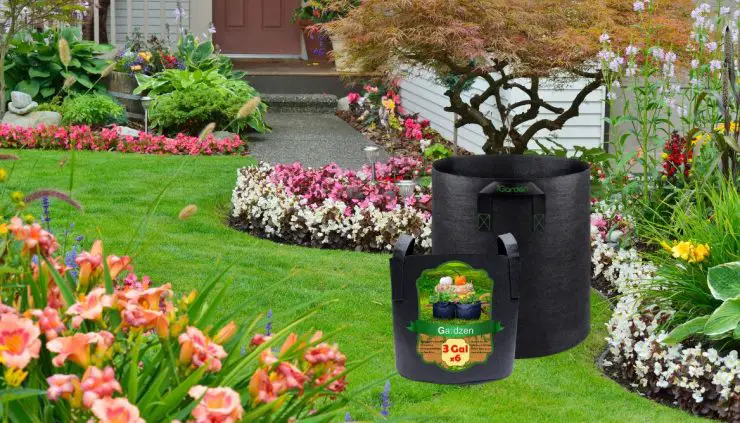



Add comment